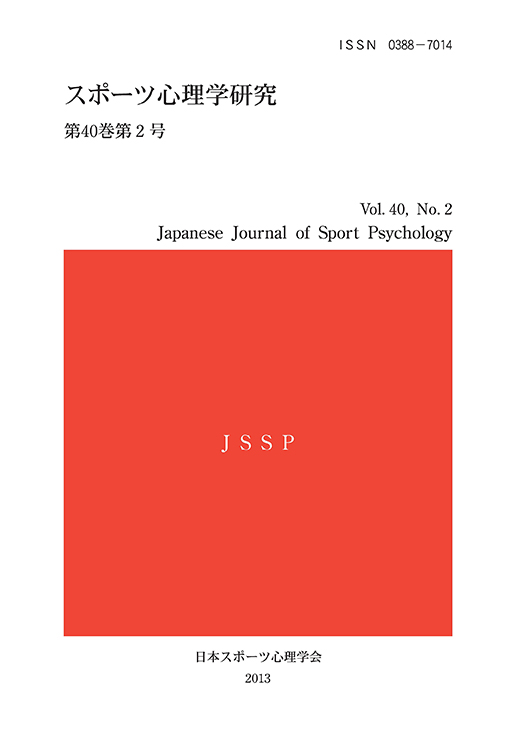Volume 40, Issue 2
Displaying 1-14 of 14 articles from this issue
- |<
- <
- 1
- >
- >|
Original Article
-
2013Volume 40Issue 2 Pages 91-108
Published: September 30, 2013
Released on J-STAGE: November 19, 2013
Advance online publication: June 20, 2013Download PDF (4452K) -
2013Volume 40Issue 2 Pages 109-124
Published: September 30, 2013
Released on J-STAGE: November 19, 2013
Advance online publication: August 08, 2013Download PDF (1299K) -
2013Volume 40Issue 2 Pages 125-137
Published: September 30, 2013
Released on J-STAGE: November 19, 2013
Advance online publication: August 08, 2013Download PDF (1223K)
Short Report
-
2013Volume 40Issue 2 Pages 139-152
Published: September 30, 2013
Released on J-STAGE: November 19, 2013
Advance online publication: June 20, 2013Download PDF (988K) -
2013Volume 40Issue 2 Pages 153-163
Published: September 30, 2013
Released on J-STAGE: November 19, 2013
Advance online publication: September 18, 2013Download PDF (1027K) -
2013Volume 40Issue 2 Pages 165-172
Published: September 30, 2013
Released on J-STAGE: November 19, 2013
Advance online publication: October 25, 2013Download PDF (814K)
-
2013Volume 40Issue 2 Pages 173
Published: September 30, 2013
Released on J-STAGE: August 27, 2021
Download PDF (240K)
-
2013Volume 40Issue 2 Pages 175-184
Published: September 30, 2013
Released on J-STAGE: August 27, 2021
Download PDF (744K) -
2013Volume 40Issue 2 Pages 185-192
Published: September 30, 2013
Released on J-STAGE: August 27, 2021
Download PDF (563K) -
2013Volume 40Issue 2 Pages 193-200
Published: September 30, 2013
Released on J-STAGE: August 27, 2021
Download PDF (617K)
-
2013Volume 40Issue 2 Pages 201-209
Published: September 30, 2013
Released on J-STAGE: August 27, 2021
Download PDF (672K) -
2013Volume 40Issue 2 Pages 211-220
Published: September 30, 2013
Released on J-STAGE: August 27, 2021
Download PDF (639K) -
2013Volume 40Issue 2 Pages 221-228
Published: September 30, 2013
Released on J-STAGE: August 27, 2021
Download PDF (602K) -
2013Volume 40Issue 2 Pages 229-236
Published: September 30, 2013
Released on J-STAGE: August 27, 2021
Download PDF (1115K)
- |<
- <
- 1
- >
- >|
